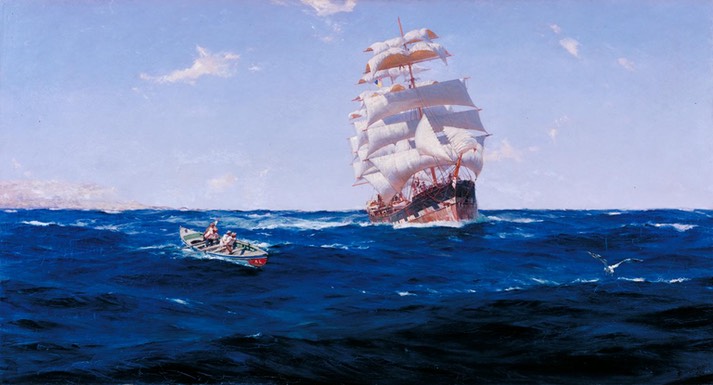Weichao and Jin had their fourth joint paper on controlling antiferromagnetic domain wall with polarized spin waves. This paper is recently published on Physical Review B (link).
In this paper, we continue to explore the possibilities of making use of spin wave polarization in antiferromagnet. We find that the antiferromagnetic domain wall can be pushed forward when the injected spin waves is polarized along one specific linear direction, while is unaffected when injecting the orthogonal polarization. This mimics the sailing of a ship harnessing the wind, only now the “wind" can be polarized.

Polarization, specifying the geometric orientation of the oscillations, is an intrinsic property of all waves. Recently, polarization also becomes a key ingredient of spin waves, especially in antiferromagnets. As we previously show, the antiferromagnetic domain wall can work as a spin wave polarizer. Here we show the inverse effect of the polarization-filtering effect of such a domain-wall-based polarizer, i.e. the polarization-selective domain wall motion driven by spin waves. Unlike other typical polarizers (such as a wire-grid plate for electromagnetic wave or a slit-window for elastic wave), the domain wall-based spin wave polarizer is not a massive materialized object but merely a magnetic structure, the back reaction of spin waves on such a domain wall-poalrizer could be very significant. The polarized-spin wave driven domain wall motion can reach a speed in order of km/s, enabling fast memory or computing operations via spin wave.
To quantitatively capture the domain wall motion, we formulate an analytical equations based on the Landau-Lifshitz-Gilbert equation, and taking account of several critical physics emerged such as the relativistic effect, the Doppler effect, and the wave amplitude decaying. The analytical results are in good agreement with micromagnetic simulations.
The polarization-selective domain wall motion by spin waves as reported in this work, in combination with polarizing effect of a domain wall, provides a complete scheme in exchanging information between the dynamical spin waves and static magnetic textures. These findings could lead to could lead to future logic-in-memory (or processing-in-memory) computing architecture solely based on magnetic systems.
